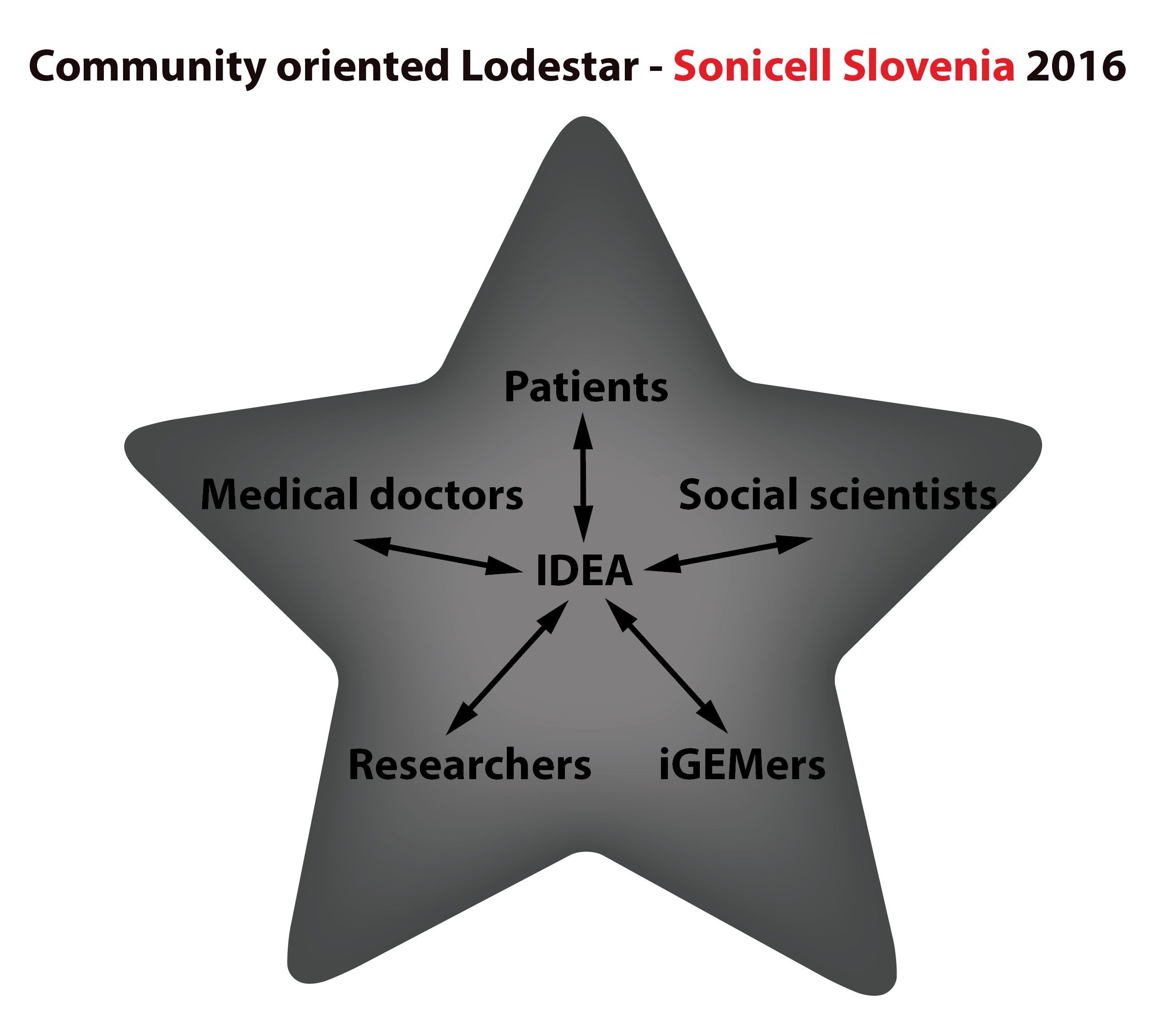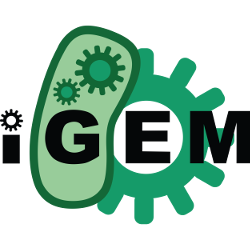m |
|||
| (One intermediate revision by one other user not shown) | |||
| Line 98: | Line 98: | ||
<figcaption><b>Figure 1: Discussion with culturologists prof. Franc Mali and doc. Toni Pustovrh, involved in SynErgene on the societal implications of our project.</b><br/></figcaption> \ | <figcaption><b>Figure 1: Discussion with culturologists prof. Franc Mali and doc. Toni Pustovrh, involved in SynErgene on the societal implications of our project.</b><br/></figcaption> \ | ||
</figure> </div> <p style="text-align:justify">Mostly communicating with MDs, researchers in natural science, and with each other, we realized we could quickly fall into the trap of having a limited view of synthetic biology and our project, living in a sort of confirmation microbubble composed of the approving scientists, but excluding the general public and their opinion. In order to tackle this, we wanted to talk to people who can understand the greater impact of science on society and how that is perceived by the general public. Taking into account the societal impacts of synthetic biology allows for more dynamic, varied solutions in the project. \ | </figure> </div> <p style="text-align:justify">Mostly communicating with MDs, researchers in natural science, and with each other, we realized we could quickly fall into the trap of having a limited view of synthetic biology and our project, living in a sort of confirmation microbubble composed of the approving scientists, but excluding the general public and their opinion. In order to tackle this, we wanted to talk to people who can understand the greater impact of science on society and how that is perceived by the general public. Taking into account the societal impacts of synthetic biology allows for more dynamic, varied solutions in the project. \ | ||
| − | We consulted prof. dr. Franc Mali and doc. dr. Toni Pustovrh, two culturologists from the University of Ljubljana, whose field of expertise is the sociology of science. We presented our project to them and they shared with us some excellent insights. Consultations with them indeed opened our horizons | + | We consulted prof. dr. Franc Mali and doc. dr. Toni Pustovrh, two culturologists from the University of Ljubljana, whose field of expertise is the sociology of science. We presented our project to them and they shared with us some excellent insights. Consultations with them indeed opened our horizons – having only best intentions we did not think of the potential misuse of our system, such as bypassing the doping regulations in professional sport by enhancing one’s own cells. The conversation later shifted to the wider field of synthetic biology and its role in ensuring social justice, which impassioned us and educated our Social Engagement and Education segment <a href = "#fig1">Figure 1</a>. </p>'; |
myId.data = "scientists"; | myId.data = "scientists"; | ||
} | } | ||
| Line 137: | Line 137: | ||
</figure> \ | </figure> \ | ||
</div> \ | </div> \ | ||
| − | <p style="text-align:justify"> Additionally we conducted an interview with prof. dr. Tadej Battelino, MD, an endocrinologist, one of the world known diabetes researchers. His expertise in the field of diabetes mellitus treatment and artificial pancreas was sufficient reason to ask him for his opinion on this topic. He seemed enthusiastic over the idea and stated that our system indeed might represent significant advantage over artificial pancreas. In addition, he gave us several ideas to implement after the iGEM competition – quantification of secreted therapeutic protein and checking FDA and EMA regulations before turning to animal models and medical trials on the long run. Our medical students got an offer from him to execute additional research under his surveillance and to turn our results from the foundation advance project to a therapeutic agent <a href = "#fig4">Figure 2</a> </p> <p style = "clear:both;"></p>'; | + | <p style="text-align:justify"> Additionally, we conducted an interview with prof. dr. Tadej Battelino, MD, an endocrinologist, one of the world known diabetes researchers. His expertise in the field of diabetes mellitus treatment and artificial pancreas was sufficient reason to ask him for his opinion on this topic. He seemed enthusiastic over the idea and stated that our system indeed might represent significant advantage over artificial pancreas. In addition, he gave us several ideas to implement after the iGEM competition – quantification of secreted therapeutic protein and checking FDA and EMA regulations before turning to animal models and medical trials on the long run. Our medical students got an offer from him to execute additional research under his surveillance and to turn our results from the foundation advance project to a therapeutic agent <a href = "#fig4">Figure 2</a> </p> <p style = "clear:both;"></p>'; |
myId.data = "researches"; | myId.data = "researches"; | ||
} | } | ||
| Line 161: | Line 161: | ||
</figure> \ | </figure> \ | ||
</div> \ | </div> \ | ||
| − | <p style="text-align:justify">Asist. dr. Matjaž Sever, MD hematologist offered us help in his area of expertise by exploring further potential applications and reading the literature. He even went a step further – by acknowledging how demanding the project is and how incredible it seems to develop it in half a year, he suggested making the list of all the potential hormones, peptides and proteins which might benefit if secreted by our quick system. | + | <p style="text-align:justify">Asist. dr. Matjaž Sever, MD hematologist offered us help in his area of expertise by exploring further potential applications and reading the literature. He even went a step further – by acknowledging how demanding the project is and how incredible it seems to develop it in half a year, he suggested making the list of all the potential hormones, peptides and proteins which might benefit if secreted by our quick system. When the iGEM competition finishes, our work does not – it is just a new beginning for more astonishing findings to take place. It is not realistic to expect from us to start a project from scratch, develop something completely new and optimize it for medical usage in the short amount of time. For that reason, our human practice investigation helped us realize how medically relevant our project could be and make long term partnerships and plans. If one wants to make a significant medical application, that person should start from already known foundations. We did not. Instead, we are making the paradigm shift which will for sure find several applications in the near future, maybe even by some future iGEM teams <a href = "#fig5">Figure 2</a>. </p><p style = "clear:both;"></p>'; |
myId.data = "doctors"; | myId.data = "doctors"; | ||
} | } | ||
Latest revision as of 16:16, 19 October 2016
Integrated Practices
Various extraordinary synthetic biology projects can be depicted as boats and ships, seeking the safety of a harbor in the wide ocean, their main purpose finding the final destination.
No matter how different or fascinating the boat is, its main purpose is to safely arrive to the harbor. Before there were modern GPS systems, sailors had to rely on using natural events and signs. One of the main was the lodestar, the most shining star, which is always a good orientation point.
Similarly, many research projects can struggle no matter how fascinating they are. They might lose the feeling of reality and just travel for the sake of travel.
In order to give the right coordinates, which showed to be of high importance in our case, we developed a new symbol for future iGEM teams who might apply their projects to the medical field – community oriented lodestar. No matter if the team is competing in the foundational advance or medical application section, maximization of the benefit to society should be the number one priority.

For content click on THE star
Consequently, if ever lost, teams should just find the shining star and orient in respect to it. By thorough discussions and careful implementation of ideas
provided by all the participants involved in the dialogue, iGEM team should be able to present at the Giant Jamboree the most of the project –completely analyzed project
in real life. It’s not only the idea that influences the minds and thinking of individuals involved, the relationship is reciprocal. People involved have a great
deal of influence over the idea itself as well. The concept will be explained on our example. While competing in the foundational advance track we have considered
many possible medical applications of our project, particularly diabetes, Parkinson’s disease and hemorrhagic diseases, since medicine is the field of study of several
students and other students and mentors have a soft spot for this direction. .



